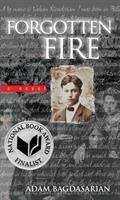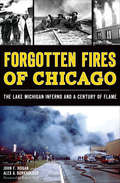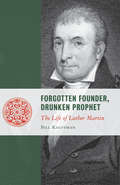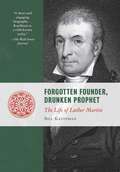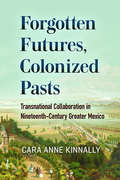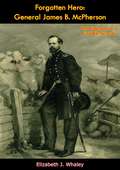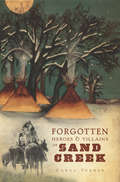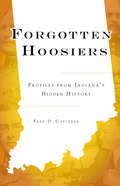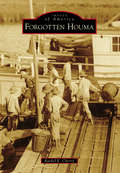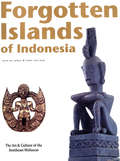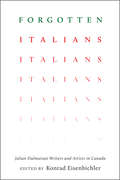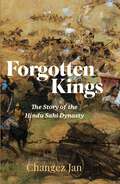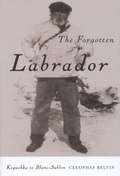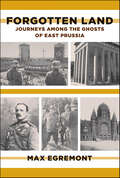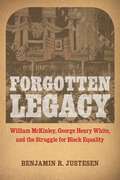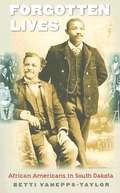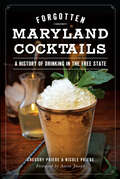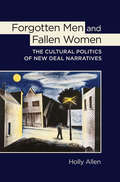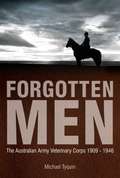- Table View
- List View
Forgotten Fighters: Child Soldiers in Angola
by Human Rights WatchAn agreement reached between government armed forces and the largest opposition group, the National Union for the Total Independence of Angola (União Nacional para a Independência Total de Angola, UNITA), brought peace to mainland Angola in April 2002. Some 100,000 adult combatants from UNITA moved with their families into quartering areas. Five thousand of these were integrated into the national police and armed forces; the rest into a formal demobilization program. Most adult fighters eighteen and older received demobilization and photo identification cards, a travel authorization certificate, a five-month salary based on military rank, and food assistance. They are also to receive a transport allowance and a reinstallation kit upon return to their home communities. But boy and girl soldiers, seventeen and younger, were not included in the demobilization program and received only an identification card and food aid distributed by the international community to family units attached to the soldiers.
Forgotten Fire
by Adam BagdasarianIn 1915 Vahan Kenderian is living a life of privilege as the youngest son of a wealthy Armenian family in Turkey. This world of comfort and security is shattered when some family members are whisked away and others are murdered before his eyes. In too short a time, Vahan loses his home and family and, to survive, is forced to live a life he could never have dreamed of. Somehow Vahan’s incredible strength and spirit help him endure even when he knows that each day could be his last.
Forgotten Fires of Chicago: The Lake Michigan Inferno and a Century of Flame (Disaster Ser.)
by John F. Hogan Alex A. BurkholderA historical journey through the city&’s catastrophic fires, and the stories of the heroes who fought them. Chicago&’s war against cinder, flame, and smoke did not end with the Great Fire of 1871. In 1909, fire ripped through the dynamite room of a staging facility a mile and half off the Lake Michigan shoreline, transforming the pipe-laying operation into a raging inferno. During the World&’s Columbian Exposition, thousands of fairgoers watched in horror as twelve firefighters were trapped in a blazing ice warehouse. An opera-goer left a smoking bomb under his seat at the Auditorium Theater in 1917. And the newly invented smoke ejector arrived too late to save firemen and laborers cut off in a sewer in 1931. Join John F. Hogan and Alex A. Burkholder for the history of these forgotten fires—and those who responded to them. &“A must-read not only for first responders but also all history buffs, especially those interested in Chicago history.&” —Robert Hoff, retired fire commissioner, Chicago Fire Department, from the foreword
Forgotten Founder, Drunken Prophet
by Bill KauffmanThe Anti-Federalist Luther Martin of Maryland is known to us--if he is known at all--as the wild man of the Constitutional Convention: a verbose, frequently drunken radical who annoyed the hell out of James Madison, George Washington, Gouverneur Morris, and the other giants responsible for the creation of the Constitution in Philadelphia that summer of 1787. In Bill Kauffman's rollicking account of his turbulent life and times, Martin is still something of a fitfully charming reprobate, but he is also a prophetic voice, warning his heedless contemporaries and his amnesiac posterity that the Constitution, whatever its devisers' intentions, would come to be used as a blueprint for centralized government and a militaristic foreign policy.In Martin's view, the Constitution was the tool of a counterrevolution aimed at reducing the states to ciphers and at fortifying a national government whose powers to tax and coerce would be frightening. Martin delivered the most forceful and sustained attack on the Constitution ever levied--a critique that modern readers might find jarringly relevant. And Martin's post-convention career, though clouded by drink and scandal, found him as defense counsel in two of the great trials of the age: the Senate trial of the impeached Supreme Court justice Samuel Chase and the treason trial of his friend Aaron Burr.Kauffman's Luther Martin is a brilliant and passionate polemicist, a stubborn and admirable defender of a decentralized republic who fights for the principles of 1776 all the way to the last ditch and last drop. In remembering this forgotten founder, we remember also the principles that once animated many of the earliest--and many later--American patriots.
Forgotten Founder, Drunken Prophet: The Life of Luther Martin (Lives of the Founders)
by Bill KauffmanThe Anti-Federalist Luther Martin of Maryland is known to us—if he is known at all—as the wild man of the Constitutional Convention: a verbose, frequently drunken radical who annoyed the hell out of James Madison, George Washington, Gouverneur Morris, and the other giants responsible for the creation of the Constitution in Philadelphia that summer of 1787. In Bill Kauffman's rollicking account of his turbulent life and times, Martin is still something of a fitfully charming reprobate, but he is also a prophetic voice, warning his heedless contemporaries and his amnesiac posterity that the Constitution, whatever its devisers' intentions, would come to be used as a blueprint for centralized government and a militaristic foreign policy. In Martin's view, the Constitution was the tool of a counterrevolution aimed at reducing the states to ciphers and at fortifying a national government whose powers to tax and coerce would be frightening. Martin delivered the most forceful and sustained attack on the Constitution ever levied—a critique that modern readers might find jarringly relevant. And Martin's post-convention career, though clouded by drink and scandal, found him as defense counsel in two of the great trials of the age: the Senate trial of the impeached Supreme Court justice Samuel Chase and the treason trial of his friend Aaron Burr. Kauffman's Luther Martin is a brilliant and passionate polemicist, a stubborn and admirable defender of a decentralized republic who fights for the principles of 1776 all the way to the last ditch and last drop. In remembering this forgotten founder, we remember also the principles that once animated many of the earliest—and many later—American patriots.
Forgotten Frontier: A History Of Wyoming Coal Mining
by A. Dudley GardnerThis work reflects part of the history of Wyoming coal mining. Much more needs to be written. To those that have produced written histories, historical overviews, and manuscripts we cited here, we extend thanks. To the archaeologists and historians who are studying Wyoming's past and attempting to preserve its lasting legacy, we applaud your efforts. The flight of time is not complete, but the history that has passed shows coal miners will be a part of the future. To those that are attempting to preserve the mining history of Wyoming and the West, we are grateful. And to men such as Steven Creasman and Gary Beach, who have the courage to dream and the willingness to persevere in attempting to save America's past, thank you. With the help of such unselfish individuals this work has been strengthened, but the responsibilities of accuracy fall to the authors alone.
Forgotten Fruits: The stories behind Britain's traditional fruit and vegetables
by Christopher StocksIn Forgotten Fruits, Christopher Stocks tells the fascinating - often rather bizarre - stories behind Britain's rich heritage of fruit and vegetables. Take Newton Wonder apples, for instance, first discovered around 1870 allegedly growing in the thatch of a Derbyshire pub. Or the humble gooseberry which, among other things, helped Charles Darwin to arrive at his theory of evolution. Not to mention the ubiquitous tomato, introduced to Britain from South America in the sixteenth century but regarded as highly poisonous for hearly 200 years.This is a wonderful piece of social and natural history that will appeal to every gardener and food aficionado.
Forgotten Futures, Colonized Pasts: Transnational Collaboration in Nineteenth-Century Greater Mexico
by Cara Anne KinnallyForgotten Futures, Colonized Pasts traces the existence of a now largely forgotten history of inter-American alliance-making, transnational community formation, and intercultural collaboration between Mexican and Anglo American elites. This communion between elites was often based upon Mexican elites’ own acceptance and reestablishment of problematic socioeconomic, cultural, and ethno-racial hierarchies that placed them above other groups—the poor, working class, indigenous, or Afro-Mexicans, for example—within their own larger community of Greater Mexico. Using close readings of literary texts, such as novels, diaries, letters, newspapers, political essays, and travel narratives produced by nineteenth-century writers from Greater Mexico, Forgotten Futures, Colonized Pasts brings to light the forgotten imaginings of how elite Mexicans and Mexican Americans defined themselves and their relationship with Spain, Mexico, the United States, and Anglo America in the nineteenth century. These “lost” discourses—long ago written out of official national narratives and discarded as unrealized or impossible avenues for identity and nation formation—reveal the rifts, fractures, violence, and internal colonizations that are a foundational, but little recognized, part of the history and culture of Greater Mexico. Published by Bucknell University Press. Distributed worldwide by Rutgers University Press.
Forgotten Healers: Women and the Pursuit of Health in Late Renaissance Italy (I Tatti studies in Italian Renaissance history)
by Sharon T. StrocchiaIn Renaissance Italy women from all walks of life played a central role in health care and the early development of medical science. Observing that the frontlines of care are often found in the household and other spaces thought of as female, Sharon Strocchia encourages us to rethink women’s place in the history of medicine.
Forgotten Hero: The Biography of a Civil War General
by Elizabeth J. WhaleyFirst published in 1955, this is a fascinating biography of General James Birdseye McPherson (1828-1864), a career United States Army officer who served as a general in the Union Army during the American Civil War.The story carries McPherson from his birth near Clyde, Ohio in 1828 to his sudden death during the Battle for Atlanta in 1864. Son of pioneer parents who migrated to northern Ohio from upstate New York in the 1820’s, McPherson, showing promise in school and at his store job, won an appointment to West Point, where he graduated top of the class of 1853. There followed a year of teaching mathematics at the military academy and then assignments with the corps of engineers, first at New York, where he served with William T. Sherman, then at San Francisco, where his task was strengthening the Alcatraz Island fortifications.Shortly after the onset of the Civil War, McPherson requested a transfer to the Corps of Engineers to further his career and, departing California in August 1861, he requested a position on the staff of Maj.-Gen. Halleck. McPherson’s career began to flourish after this assignment, rising through the ranks and battles to become Major-General and given command of Grant’s Army of Tennessee in March 1864. Sherman began his Atlanta Campaign in May 1864, with McPherson and his army constituting the right flank, and it was during the Battle of Atlanta in July 1864 that McPherson left his permanent mark on the history of his country when he lost his life as the second highest-ranking Union officer killed during the war.“In presenting this story of his life, I have tried to bring out an officer whose dynamic personality was reflected in the results of many engagements on the battlefield; a gentleman whose talent for friendship and love for people endeared him to thousands; a leader whose quick decisions and wise, cool judgments were needed after the noise of battle had subsided.”—Elizabeth J. Whaley
Forgotten Heroes
by Susan WareThe pages of the past are full of characters who remind us that history depends upon the great deeds of men and women, whether famous or humble. Where would America be without George Washington, or Daniel Boone, or Sojourner Truth, or Babe Ruth? Where would we be without so many characters who are less well remembered today? Historians and biographers regularly come across stories of little-known or forgotten heroes, and this book provides a chance to rescue some of the best of them. In Forgotten Heroes, thirty-five of the country's leading historians recount their favorite stories of underappreciated Americans. From Stephen Jay Gould on deaf baseball player Dummy Hoy; to William Leuchtenburg on the truth behind the legendary Johnny Appleseed; to Christine Stansell on Margaret Anderson, who published James Joyce's Ulysses; these portraits can be read equally for delight, instruction, and inspiration Taken together, however, the whole is much more than the sum of its parts. Every culture needs heroes who lead by example and uplift us all in the process. Too often lately, historians have been more intent on picking apart the reputations of previously revered Americans. At times it has seemed as if the academy were on the attack against much of its own culture, denying its past greatness while making heroes only of its dissidents and doubters. Yet as this collection vividly demonstrates, heroes come in many shapes and sizes, and we all gain when we remember and celebrate them. Forgotten Heroes includes nearly as many women as men, and nearly as many people from before 1900 as after. It expands the traditional definition of hero to encompass not only military figures and politicians who took risks for great causes, but also educators, religious leaders, reformers, labor leaders, publishers, athletes, and even a man who started a record company. Many of them were heroes of conscience -- men and women who insisted on doing the right thing, no matter how unpopular or risky, commanding respect even from those who disagreed. Some were famous in their day and have since been forgotten, or remembered only in caricature. Others were little-known even when alive -- yet they all deserve to be remembered today, especially at the gifted hands of the authors of this book.
Forgotten Heroes and Villains of Sand Creek
by Carol TurnerOn November 29, 1864, Colonel John Chivington led a bloody and terrible raid on an encampment of Arapaho and Cheyenne who had come to the area believing they were on a path to peace. Before it was over, between 130 and 180 Native Americans had been massacred. This attack, known as the Sand Creek Massacre, is one of the most well-known and notorious events in Colorado's history. In Forgotten Heroes and Villains of Sand Creek, author Carol Turner turns an eye to the central characters, their histories and how they came to be part of this bloody episode. This fascinating look at such a pivotal event, its instigators and its martyrs includes the stories of John Chivington, am ambitious preacher with a streak of cruelty; Captain Silas Soule, a man who is still honored today by the Cheyenne and Arapaho tribes for his efforts in saving their ancestors; Ned Wynkoop, one of Soule's compatriots who had a change of heart regarding the tribes; Chief One Eye, a persuasive and charismatic medicine m
Forgotten Hoosiers: Profiles from Indiana's Hidden History (Forgotten Tales)
by Fred D. CavinderVowing to overcome the sin of seriousness, Indiana-born humorist Don Herold lived up to his promise. Gifted with a droll sense of humor and a vivid imagination, he was one of the most widely read, if least remembered, Hoosiers. In Forgotten Hoosiers, journalist Fred D. Cavinder presents a collection of biographical sketches charting the lives of noteworthy Hoosiers who have been overlooked, as well as acclaimed figures whose Hoosier origins have been obscured. From Harland David Sanders, the pioneering Kentucky colonel who developed the world-famous chicken franchise, to Samuel G. Woodfill, whom many have called the greatest hero of World War I, Hoosiers- both known and unknown- have continued to make their marks across the country and the world.
Forgotten Houma
by Rachel E. CherryHouma officially became the seat of Terrebonne Parish in 1848; however, the area known as "terre bonne" ("the good earth") was inhabited much earlier. The Houma tribe settled the land as early as 1760, Arcadian French settlers arrived by 1785, Spanish settlers by 1790, and wealthy English landowners established the area's first plantations in 1828. Agriculture, hunting, and fishing activities such as oyster harvesting and shrimp drying were prominent occupations in the parish until the oil and gas industry took hold of the economy in the 1920s. Seemingly endless waterways, marshes, and bays, coupled with fertile farmland and oil production, helped foster Houma's lucrative economy; likewise, a blend of customs, traditions, and natural disasters have shaped its unique culture. Forgotten Houma uses vintage photographs to capture the community before modernization and destruction, awakening the spirits of former residents and the memories of earlier ways of life.
Forgotten Islands of Indonesia
by Joss Van Dijk Nico DejongeThis beautiful book contains over 170 unique photographs and pictures of one of the most interesting but least well known cultures in the Indonesian Archipelago.The traditional art of Maluku Tenggara, the Southeast Moluccas, is among the most sophisticated and expressive in the world. Simple tools were used to create masterpieces in wood, stone, textiles and precious metals, while the plaited work and earthenware of these islands are also of the very highest quality.the colonial period plunged the region into hopeless isolation. During the harsh rule of the Dutch many traditional woks of art, especially ancestor statues, were destroyed. Later, collectors stripped the islands of their masterpieces and the culture of Maluka Tenggara was forgotten.Forgotten Islands of Indonesia presents a unique survey of the finest examples of Southeast Moluccan art. This volume contains many photographs and descriptions which have never before been published. Set against the cultural background and supplemented by rare photographs taken in the field, the material culture of Maluku Tenggara, which is regarded as one of the most fascinating areas of Indonesia, is presented here comprehensively for the first time.
Forgotten Italians: Julian-Dalmatian Writers and Artists in Canada (Toronto Italian Studies)
by Konrad EisenbichlerScholarship on Italian emigration has generally omitted the Julian-Dalmatians, a group of Italians from Istria and Dalmatia, two regions that, in the wake of World War Two, were ceded by Italy to Yugoslavia as part of its war reparations to that country. Though Italians by language culture, and traditions, it seems that this group has been conveniently excised from history. And yet, Julian-Dalmatians constitute an important element in twentieth-century Italian history and represent a unique aspect of both Italian culture and emigration. This ground-breaking collection of articles from an international team of scholars opens the discussion on these “forgotten Italians” by briefly reviewing the history of their diaspora and then by examining the literary and artistic works they produced as immigrants to Canada. Forgotten Italians offers new insights into such celebrated authors as Diego Bastianutti, Mario Duliani, Caterina Edwards, and Gianni Angelo Grohovaz, as well as visual artists such as Vittorio Fiorucci and Silvia Pecota. Profoundly marked by the experience of being uprooted and forced into exile, by life in refugee camps, and by the encounter with a new culture, first-generation Julian-Dalmatians in Canada used art and writing to come to terms with their anguished situation and to rediscover their cultural roots.
Forgotten Kings: The Story of the Hindu Sahi Dynasty
by Changez Jan&‘This Hindu Sahiya dynasty is now extinct, and of the whole house there is no longer the slightest remnant in existence. We must say that, in all their grandeur, they never slackened in the ardent desire of doing that which is good and right, that they were men of noble sentiment and noble bearing.&’People and their acts of bravery are often lost to the annals of history. But what of mighty lineages? Generations of kings and the lands and people they fought for? What of kings who fought against their own people?The Hindu Sahi kings, to whom honour and pride were more important than their own survival, fought a near 150 year rear-guard action as they continued to be pushed east from Kabul, their original homeland, changing their capitals and defending themselves from their own countrymen.The last of their house had the misfortune of confronting the juggernaut that was Sultan Mahmud of Ghazni. Where obedience to the Sultan would have allowed their house to endure, their honour would have them confront him over and over.But who were they?This book tries to piece together their story from the limited sources that are available from an age where historical sources were few and, in the case of the Sahis, mostly from the point of view of their enemies.This is the story of a dynasty that represented a resurgent Hindu faith in a land that was long dominated by Buddhism but also coincided with the arrival of the Muslims.
Forgotten Labrador
by Cleophas BelvinCleophas Belvin describes the arrival of the Aboriginals and the activities of the Breton and Basque fishermen and French-and English-speaking merchants from Quebec City who controlled the region for more than one hundred and fifty years. He paints a vivid picture of the lifestyle and living conditions of the early French- and English-speaking pioneers and their descendants, offering an analysis of why they settled in the region and how they dealt with the precariousness of the seal, salmon, and cod fisheries. The Forgotten Labrador also explores the role of the Anglican and Catholic missionaries, the establishment of educational, medical, transportation, and communication services and the various government and local initiatives that were undertaken to provide the people with some form of economic prosperity.
Forgotten Labrador: Kegashka to Blanc-Sablon
by Cleophas BelvinThe Forgotten Labrador recounts the history of a remarkable area of Canada - the Quebec part of the Labrador coast that extends eastward from Kegashka to Blanc Sablon. Cleophas Belvin describes the arrival of the Aboriginals and the activities of the Breton and Basque fishermen and French- and English-speaking merchants from Quebec City who controlled the region for more than one hundred and fifty years. He paints a vivid picture of the lifestyle and living conditions of the early French- and English-speaking pioneers and their descendants, offering an analysis of why they settled in the region and how they dealt with the precariousness of the seal, salmon, and cod fisheries. The Forgotten Labrador also explores the role of the Anglican and Catholic missionaries, the establishment of educational, medical, transportation, and communication services, and the various government and local initiatives that were undertaken to provide the people with some form of economic prosperity.
Forgotten Land: Journeys Among the Ghosts of East Prussia
by Max EgremontUntil the end of World War II, East Prussia was the German empire's farthest eastern redoubt, a thriving and beautiful land on the southeastern coast of the Baltic Sea. Now it lives only in history and in myth. Since 1945, the territory has been divided between Poland and Russia, stretching from the border between Russia and Lithuania in the east and south, and through Poland in the west. In Forgotten Land, Max Egremont offers a vivid account of this region and its people through the stories of individuals who were intimately involved in and transformed by its tumultuous history, as well as accounts of his own travels and interviews he conducted along the way.Forgotten Land is a story of historical identity and character, told through intimate portraits of people and places. It is a unique examination of the layers of history, of the changing perceptions and myths of homeland, of virtue and of wickedness, and of how a place can still overwhelm those who left it years before.
Forgotten Legacy: William McKinley, George Henry White, and the Struggle for Black Equality
by Benjamin R. JustesenIn Forgotten Legacy, Benjamin R. Justesen reveals a previously unexamined facet of William McKinley’s presidency: an ongoing dedication to the advancement of African Americans, including their appointment to significant roles in the federal government and the safeguarding of their rights as U.S. citizens. During the first two years of his administration, McKinley named nearly as many African Americans to federal office as all his predecessors combined. He also acted on many fronts to stiffen federal penalties for participation in lynch mobs and to support measures promoting racial tolerance. Indeed, Justesen’s work suggests that McKinley might well be considered the first “civil rights president,” especially when compared to his next five successors in office. Nonetheless, historians have long minimized, trivialized, or overlooked McKinley’s cooperative relationships with prominent African American leaders, including George Henry White, the nation’s only black congressman between 1897 and 1901. Justesen contends that this conventional, one-sided portrait of McKinley is at best incomplete and misleading, and often severely distorts the historical record. A Civil War veteran and the child of abolitionist parents, the twenty-fifth president committed himself to advocating for equity for America’s black citizens. Justesen uses White’s parallel efforts in and outside of Congress as the primary lens through which to view the McKinley administration’s accomplishments in racial advancement. He focuses on McKinley’s regular meetings with a small and mostly unheralded group of African American advisers and his enduring relationship with leaders of the new National Afro-American Council. His nomination of black U.S. postmasters, consuls, midlevel agency appointees, military officers, and some high-level officials—including U.S. ministers to Haiti and Liberia—serves as perhaps the most visible example of the president’s work in this area. Only months before his assassination in 1901, McKinley toured the South, visiting African American colleges to praise black achievements and encourage a spirit of optimism among his audiences. Although McKinley succumbed to political pressure and failed to promote equality and civil rights as much as he had initially hoped, Justesen shows that his efforts proved far more significant than previously thought, and were halted only by his untimely death.
Forgotten Lives: African Americans in South Dakota
by Betti Carol Vanepps-TaylorThroughout South Dakota's history, African Americans have been vastly outnumbered by their white and American Indian neighbors. Under-reported as well, they have been misrepresented by historians, journalists, even census-takers. However, from the first African Americans to visit the Northern Great Plains as fur traders in the early 1800s to twentieth-century voting-rights advocates or professionals recruited after World War II, African Americans have pioneered here. They have participated in the state's successes and failures and contributed to its rich history.
Forgotten Maryland Cocktails: A History of Drinking in the Free State (American Palate Ser.)
by Gregory Priebe Nicole PriebeThe Southside, Diamondback and the Preakness--Marylanders imbibe history in their native cocktails, from local favorites to little-known classics. Early residents favored fruit brandies and potent punches until the Civil War, when rye whiskey laid claim to local palates. During the golden age of the cocktail, grand hotels like Baltimore's Belvedere created smooth concoctions such as the Frozen Rye, but the dry days of Prohibition interrupted the good times. Using historic recipes with modern twists from renowned mixologists, Greg and Nicole Priebe mix up one part practical guide and three parts Maryland history and top it off with a tour of the current craft cocktail and distilling scenes.
Forgotten Men and Fallen Women: The Cultural Politics of New Deal Narratives
by Holly AllenDuring the Great Depression and into the war years, the Roosevelt administration sought to transform the political, institutional, and social contours of the United States. One result of the New Deal was the emergence and deployment of a novel set of narratives—reflected in social scientific case studies, government documents, and popular media—meant to reorient relationships among gender, race, sexuality, and national political power. In Forgotten Men and Fallen Women, Holly Allen focuses on the interplay of popular and official narratives of forgotten manhood, fallen womanhood, and other social and moral archetypes. In doing so, she explores how federal officials used stories of collective civic identity to enlist popular support for the expansive New Deal state and, later, for the war effort.These stories, she argues, had practical consequences for federal relief politics. The “forgotten man,” identified by Roosevelt in a fireside chat in 1932, for instance, was a compelling figure of collective civic identity and the counterpart to the white, male breadwinner who was the prime beneficiary of New Deal relief programs. He was also associated with women who were blamed either for not supporting their husbands and family at all (owing to laziness, shrewishness, or infidelity) or for supporting them too well by taking their husbands’ jobs, rather than staying at home and allowing the men to work.During World War II, Allen finds, federal policies and programs continued to be shaped by specific gendered stories—most centrally, the story of the heroic white civilian defender, which animated the Office of Civilian Defense, and the story of the sacrificial Nisei (Japanese-American) soldier, which was used by the War Relocation Authority. The Roosevelt administration’s engagement with such widely circulating narratives, Allen concludes, highlights the affective dimensions of U.S. citizenship and state formation.
Forgotten Men: The Australian Army Veterinary Corps 1909-1946 (Big Sky Publishing Ser.)
by Michael TyquinForgotten Men is the long overdue account of the significant contribution to the Australian Army of the Australian Army Veterinary Corps in two world wars. One of the army's smallest and least recognised corps, its humble beginnings and quiet work in the background belie the crucial role of the Corps in supporting wartime operations and dealing with logistical issues never envisaged before 1915. While their place in military history is often overlooked, the men of the Australian Veterinary Corps deserve recognition. Stoic and hardworking, they unselfishly worked among the horrors of war, to provide the support needed for army units and their animals. While the Veterinary Corps reached its peak during the Great War, its role did not end when the guns fell silent in 1918. Instead, the Corps continued to support military activities across Australia until horsepower finally gave way to mechanisation in World War II. The Corps' success in enabling the 1st Australian Imperial Force to fight in two theatres, each with its own peculiar veterinary problems, is an achievement worth recording. Doctor Michael Tyquin is a consulting historian based in Canberra. He has published extensively in the areas of Australian social, medical and military history. He is a serving member of the Australian Army Reserve which he joined as a medical assistant with the 4/19th Prince of Wales Light Horse. He is the official historian of the Royal Australian Army Medical Corps and is an Adjunct Professor at the University of Queensland's Centre for Military and Veterans' Health.

